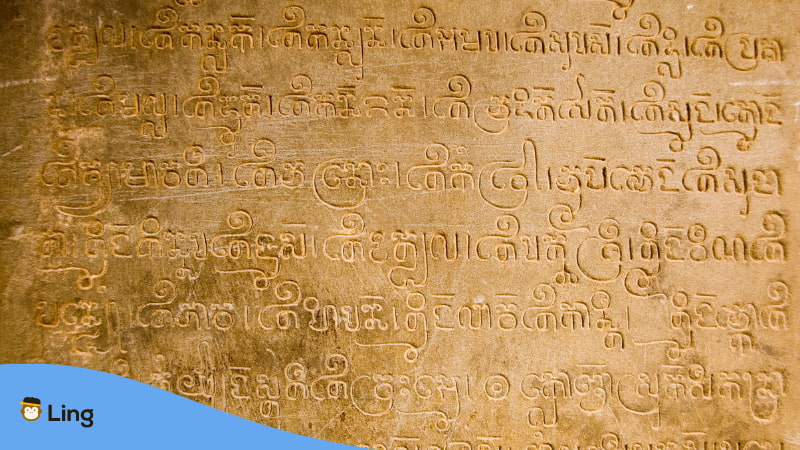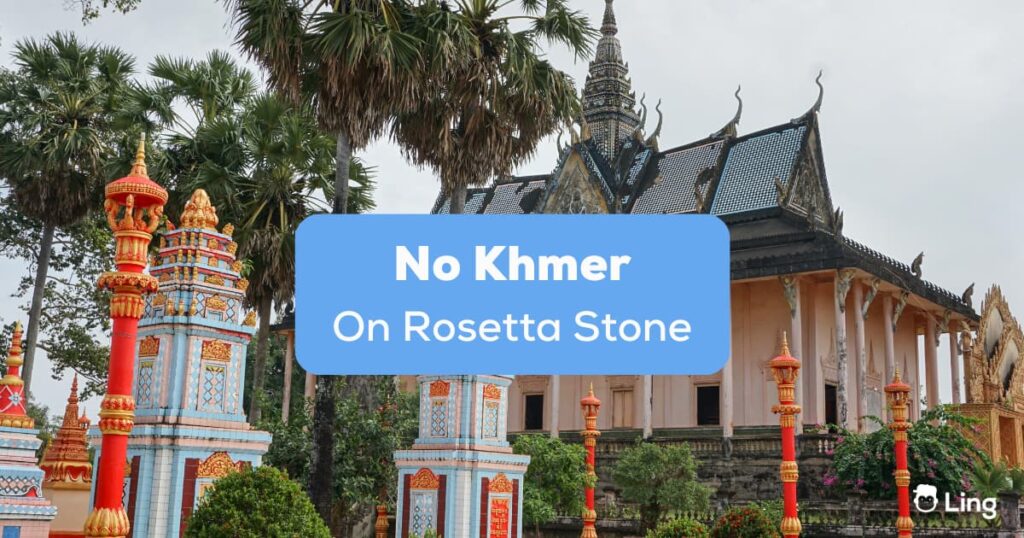Khmer may not sound like your popular language to learn, but it can be a great addition to your resume, your skills, or just a hobby you may have picked up randomly. How clued up are you on language learning apps? If you’re an addict like me, you probably know that there’s no Khmer on Rosetta Stone.
This poses a problem for those who want to live and work in Cambodia. Fortunately, there are newer and better resources that you can use today. Learn about the best two alternatives, such as Ling, in today’s post!
Why Is There No Khmer On Rosetta Stone?
Khmer should definitely be at the top of any language learning platform’s ‘must-have’ list if we were purely by historical impact. If you’ve ever been to Angkor Wat and seen how stunning it is, you know that it was a truly remarkable culture. However, that’s not how things work in the modern world. Cambodia’s recent history has been almost inconceivably dark.
The economy was destroyed in the 1970s by the Khmer Rouge genocide. As unsettling as it is to contemplate, the bigger language-learning apps are more concerned with how many potential users they can attract rather than the uniqueness of a language. It costs approximately the same amount to develop a language learning course, so your choice could be between Chinese, Japanese, and Korean as a planner. Executives who care about their bottom line will pick the first 2.

What Are The Alternatives To Rosetta Stone?
- The most obvious is Youtube, where there are native Khmer speakers. Several Youtube channels can help you. In our opinion, the best is the Khmer Lesson channel. The man running the channel really knows what he’s doing and provides regular content. Be sure to check the comments for any potential language buddies.
- Learn Khmer With Ling
What Is Khmer?
After we talk about why there is no Khmer on Rosetta Stone, let’s learn more about what Khmer is. Khmer is the national language of Cambodia and belongs to the Austroasiatic branch of the language tree. Its biggest influences are Sanskrit and Pali, which emerged from Buddhist and Hindu teachings. It has approximately 16 million speakers.
There are different accents in Cambodia, but the most widely spoken and the one the Ling app chooses is central Khmer. Interestingly, the people in the capital of Phnom Penh speak a separate dialect.
Khmer is also spoken beyond the borders of Cambodia, both in North East Thailand and East Vietnam.
Let’s get a little more specific. The Khmer word order is Subject-Verb-Object. Like other Asian languages, there are also pronouns and honorifics relating to age and social hierarchy. Although you may find this hard to believe, Khmer is not a tonal language. That’s remarkable to consider since its neighbors in Burma, Thailand, Laos, and Vietnam are all tonal.

Why Should You Visit Cambodia?
Any discussion about the country of Cambodia and why you should visit will be based around the transcendental Angkor Wat.
Angkor Wat is a sacred place in Buddhism and a UNESCO World Heritage Site. There is a common saying that people vote with their feet, and no more is this true of Angkor, where 2.6 million tourists visit every year.
Not many people know that Angkor Wat is actually a religious complex. In fact, it is the largest in the world. The central temple was constructed in the 1100s (back then, London was just a backwater town). Architects will notice it follows classic Khmer architecture, namely the mountain and galleried temple. This central temple is so important to Cambodian culture that it even appears on its flag!
So that’s your general overview, but what are some specifics about the site?
- In Khmer. Angkor translates to ‘Capital City’ or ‘Kingdom’ If you follow our Thai blog, you’ll know that ‘wat‘ means a temple.
- Angkor Wat is not just a Buddhist temple. It was originally Hindu and built for the God Vishnu. It wasn’t until the end of the 1100’s it converted to Buddhism.
- Angkor Wat is oriented to the west, something rare that further affirms the idea that it was originally built as a Hindu temple. Because it faces the west also makes the sunset something to behold.
- The actual building of the temple itself is an architectural achievement to rival anything by the ancient Egyptians. It took 5 million tons of sandstone to complete the magnificent structure. The crazy thing is that those gigantic blocks (1500kg each) came from 25 miles away. It isn’t easy to know exactly how they did it, but experts think they were floated on rafts down the Siem Reap River. Of course, there was no machinery available to the builders. Inscriptions at the site say that it took 300,000 workers and 6000 elephants. Quite a sight.
Learn Khmer With Ling
The Ling app is undoubtedly the best place to learn Khmer. Ling has been making massive waves recently in the language learning market. So what makes Ling so good? Our systematic approach.
- Listening practice. Listening is a vital skill and something which Ling has perfected. Most importantly, all our content is recorded by native speakers, so your accent will be authentic!
- Speaking practice. Chat like old friends with our A.I. chatbot!
- SRS flashcards to build your vocabulary
- A leaderboard to compare yourself to other users and chart your own progress
- Constantly updating material
- Non-intrusive grammar guides
- 60 other languages to choose from
Check out our dedicated Khmer blog to learn more about Khmer. If you’re interested in language learning apps, check out some of these reviews Tandem Vs. Mango and iTalki Vs. Preply.
So what are you waiting for? Start learning a new language today with the Ling app. Download it on your iOS or Android device now!





































